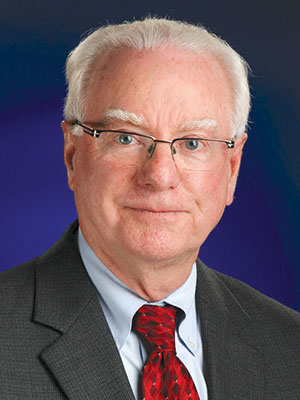
Hearing about histiocytic disorders might dredge up memories of an obscure footnote during fellowship or a passing mention during a residency seminar. Erdheim-Chester disease might sound more familiar, or Langerhans’s cell histiocytosis (LCH), Rosai-Dorfmann disease, or a host of other obscure, usually eponymic conditions. The clinical background and pathology are different, but all derive from the same sets of genetic mutations. And all respond to the same kinds of targeted inhibitors.
“We have a new classification of histiocytic disorders and some important new advances in treatment,” said Gordon Starkebaum, MD, Professor Emeritus of Rheumatology at the University of Washington Medical Center, Seattle. “Many of these diseases are the result of mutations in the mitogen activated protein kinase (MAPK) pathway. And it turns out that we have medications that can inhibit the activation from these mutations to treat the disease.”
Dr. Starkebaum organized and will co-moderate ACR’s first-ever symposium on Histiocytic Disorders: Don’t Miss New Drugs from 4:30 – 5:30 pm Tuesday in Room B308, Building B of the Georgia World Congress Center. The other co-moderator is Eyal Muscal, MD, MS, Associate Professor of Pediatrics and Rheumatology at Baylor College of Medicine and the featured presenter is neuro-oncologist and neurologist Eli Diamond, MD, Memorial Sloan Kettering Cancer Center.
Histiocytic disorders have traditionally been seen as rare, obscure, and without good treatment options.
“Up until recently, I had seen one case in my entire 35-year career that I recognized,” Dr. Starkebaum said. “Now, I’ve seen two cases in the past couple of years. What really caught my attention was a patient diagnosed with multicentric reticulohistiocytosis based on the pathology.”
There were no good treatments, Dr. Starkebaum said, but the patient had progressive lesions that clearly needed attention. An oncologist suggested a gene array test, OncoPlex, to check for already-recognized gene mutations. The test showed mutations in the MAPK pathway originally associated with specific types of cancers.
About half of histiocytic disorder patients have BRAF mutations without other MAPK mutations.
The patient entered a Phase 2 study of a MAPK inhibitor directed by Dr. Diamond and showed a dramatic response. A second patient, diagnosed at a later stage, was started on an appropriate MAPK inhibitor but died.
“The stakes are high with histiocytic disorders because if you don’t recognize it, or don’t recognize it in time, you may not be able to treat it,” Dr. Starkebaum said. “Histiocytic disorders are touted as being rare, but if you look at Medline, there are more than 900 citations for Erdheim-Chester alone.”
Until recently, the pathogenesis of histiocytic disorders was a question mark. Clinical manifestations can be variable, which meant that dermatologists, rheumatologists, oncologists and other specialists were all seeing patients. Individually, the disorders were rare, with little research and no good treatments.
Recent genetic findings on MAP and BRAF mutations that began in oncology research have transformed the picture. Existing RAF inhibitors can be highly effective for the 50% of patients with BRAF mutations. For patients who do not respond to RAF inhibitors, early stage MAPK inhibitor trials are showing response rates of close to 90%. Dr. Diamond is leading much of this research.
“Classification for histiocytic disorders has changed and the ability to diagnose has evolved with the evaluation of MAP and BRAF gene mutations,” Dr. Starkebaum said. “Treatment has improved and can make a difference in our patients’ lives. In the past, we weren’t even sure this was a cancerous disorder. There is much more known now about the genetic mutations that cause histiocytic disorders and how they can be treated.”


